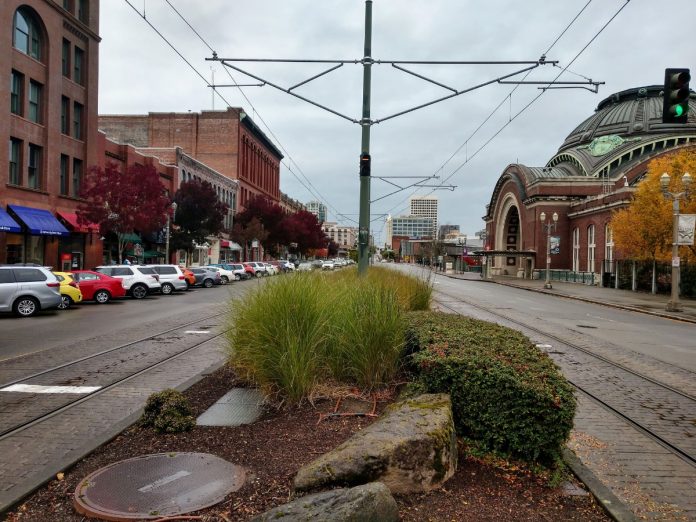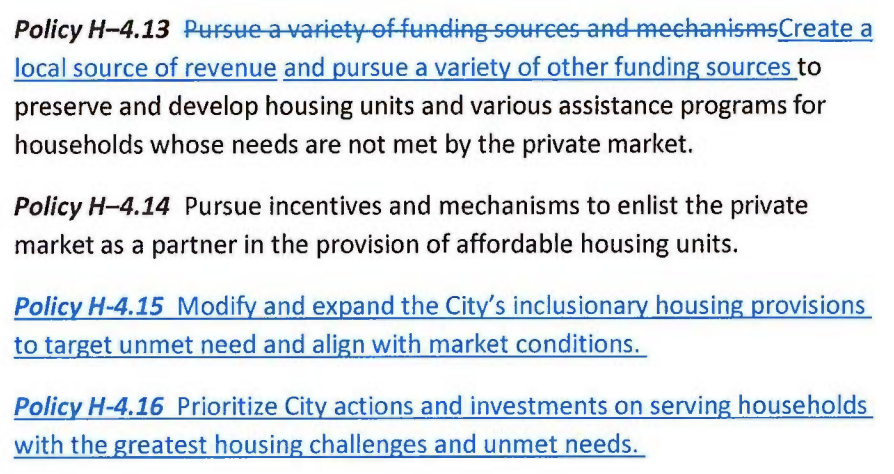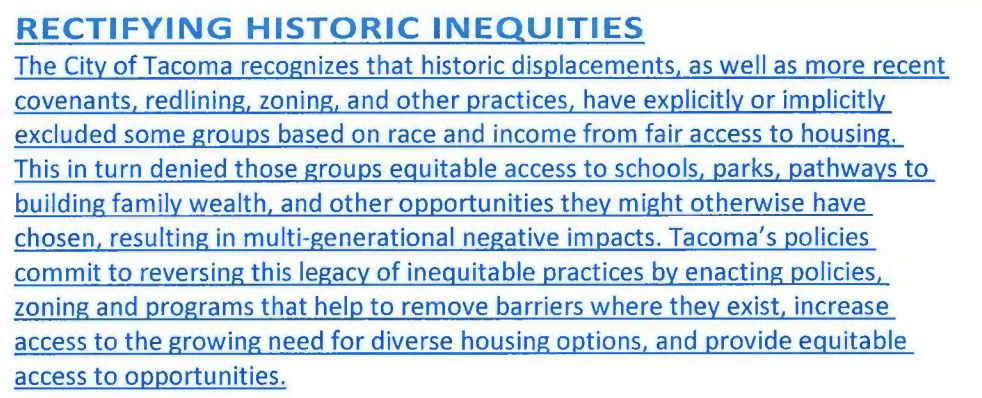
In late September, the Tacoma City Council approved a large slate of areawide rezones and future land use map designation changes, which primarily affected residential properties. The rezones and land use designation changes were included as part of the annual Comprehensive Plan update process for minor amendments, which were proposed in order to attain consistency between zoning and land use designations. The practical effect of this was that many properties were rezoned for more intensive uses.
A companion proposal to rezone and update regulations for a suite of commercial areas, however, was held up this year due to timing issues and project scope; this is likely to come back next year as part of the next update. The city council also made notable changes to its housing policies, including missing middle housing, an equity analysis, inclusionary zoning, and a rental inspection program. The changes came into effect in late October.
Adopted rezones and land use designation changes
The areawide rezones in Tacoma were largely an effort to attain consistency with the Comprehensive Plan. Generally, zoning changes went in the direction of higher intensity. Where zoning of a site was less intensive or inconsistent with a future land use map (FLUM) designation type, the highest and most consistent implementing zoning type was proposed. Implementing zoning, by the way, is prescribed by the Comprehensive Plan whereby a FLUM designation may have one or more companion zoning types that are permitted to be used on a site with a particular FLUM designation. In some cases, FLUM changes were proposed to match appropriate zoning for a site.
The changes to zoning should not be overstated. The changes adopted by the city council represent a small fraction of single-family areas and an even smaller fraction of the city, but they should help the city expand overall development capacity.

To provide an understanding of the relationship of implementing zoning to FLUM designations, the following are various FLUM designations and their related zoning types:
- Single Family Residential: R1 (Single-Family Dwelling District), R2 (Single-Family Dwelling District), 2SRD (Residential Special Review District), and HMR-SRD (Historic Mixed Residential Special Review District) zoning;
- Multi-Family (low-density): R3 (Two-Family Dwelling District) and R4L (Low-Density Multiple-Family Dwelling District) zoning;
- Multi-Family (high-density): R4 (Multiple-Family Dwelling District) and R5 (Multiple-Family Dwelling District) zoning;
- Neighborhood Commercial: C1 (General Neighborhood Commercial District) and T (Transitional District) zoning; and
- General Commercial: PDB (Planned Development Business District), HM (Hospital Medical District), and C2 (General Community Commercial District) zoning.
Target densities of the different FLUM designations are as follows:
- Six to twelve dwelling units per net acre in Single Family Residential areas;
- Fourteen to thirty-six dwelling units per net acre in Multi-Family (low-density) and Neighborhood Commercial areas; and
- Forty-five to seventy-five dwelling units per net acre in Multi-Family (high-density) and General Commercial areas.
Earlier in the process, there had been several other areas proposed for zoning changes. But the Tacoma Planning Commission and city council pulled out a limited number of blocks from rezoning.
The most intensive zoning change was just off of N Mildred St and 6th Ave where a large parcel went from R4L to C2. Several other large parcels nearby went from R4L to R4 and R3 to R4, all of which are notable jumps in development capacity. But the bulk of rezones across the city involved changes to R3 and R4L zoning, often from what were originally R2 zones. There were, however, very limited circumstances where C1 and C2 zoning went to multifamily residential zoning, and a handful of instances where zoning when down to R2 single-family zoning.


The following are several examples of FLUM designation changes, which include Multi-Family, Neighborhood Commercial, and Single Family Residential:


Tacoma does have an interactive map to visualize the rezones and FLUM designation changes on a parcel-by-parcel basis.
Comprehensive Plan housing amendments
The city’s Comprehensive Plan now explicitly states that infill housing is necessary within single-family area to meet citywide housing goals. The plan still commits to development within the city center, designated urban villages, and along transit corridors, but allowing missing middle housing more broadly throughout the city could help realize the overarching housing goals. One of the new policies effectively directs the city adopt regulations for more missing middle housing.

Several other housing policies were included in the Comprehensive Plan update, including policies geared toward tenant protections, economically distressed households, funding housing assistance programs, using inclusionary zoning, and implementing a rental inspection program.



Lastly, the Tacoma City Council incorporated a new section in the Comprehensive Plan highlighting local history in racially-motivated policies and practices that created inequitable outcomes. The Comprehensive Plan now commits the city to working to undo these practices and remove barriers to housing and opportunity for people of color and lower wealth.

Taking this a step further, Tacoma has mapped by census block an index of areas with high-to-low access to opportunity and the percentage of households that are cost-burdened for rent.

Next year, the annual Comprehensive Plan update may make zoning, regulatory, and policy changes to commercial areas as another phase to this body of work. A larger statutorily-required update to the Comprehensive Plan is due by 2023. Undoubtedly, the city’s long-range planning unit is gearing up for the lengthy process, which will involve extensive community engagement, and require the city to determine how to accommodate an additional 137,000 residents by 2050. On top that, the city secured a grant as part of the housing options incentive bill that the state legislature passed earlier this year. With $100,000 in hand, the city hopes to work on a housing action plan that should result in more affordable and equitable housing outcomes in the years ahead.
Stephen is a professional urban planner in Puget Sound with a passion for sustainable, livable, and diverse cities. He is especially interested in how policies, regulations, and programs can promote positive outcomes for communities. With stints in great cities like Bellingham and Cork, Stephen currently lives in Seattle. He primarily covers land use and transportation issues and has been with The Urbanist since 2014.

